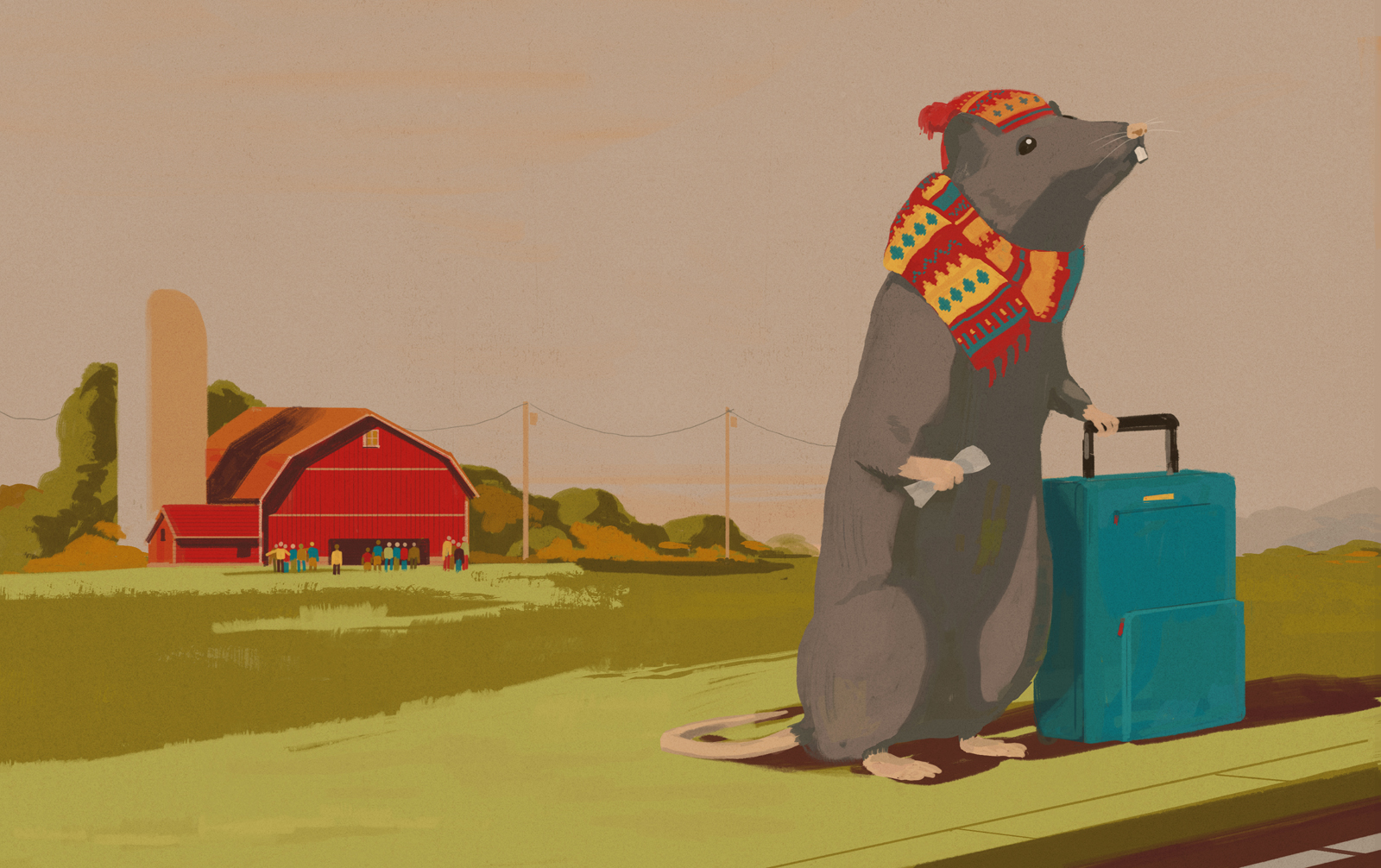Alberta’s Fight Against Rats Holds a Big Lesson for Us All
Why are there no Ratti norvegici in Alberta?

Plentiful hydrocarbons. Low taxes. High-performing hockey players. Over the years, much ink has been spilled about the so-called “Alberta Advantage,” that special something that makes Canada’s “get-er-done” province stand out from the other nine. Let us add one more to the list: the near-complete absence of Rattus norvegicus—the Norway (or brown) rat.
Alberta is one of the few regions on Earth to withstand the relentless colonization of what is arguably the most resilient of mammals—a feature shared with Antarctica, the Arctic, and a handful of isolated islands. Perhaps more interestingly, it is also the only territory that owes its rat-free good fortune not to extremes in temperature or isolation (although those certainly didn’t hurt) but to dogged determination and focused community effort.
The battle for Alberta—a fitting description, given the propaganda-themed posters, the antirodent radio broadcasts, and the considerable government resources devoted to the effort—begins in 1950, when the Norway rat first appeared on the Saskatchewan border. Realizing the danger to both public health and the province’s then largely agriculture-based economy, authorities quickly established a rat control zone stretching from Cold Lake in the north to the Montana border in the south. A cadre of provincial officers were authorized to inspect and monitor nearly every structure within the zone, in several cases tearing down infested buildings or even taking property owners to court to enforce compliance.
But something else was needed. For as resilient as it is, the Norway rat cannot survive in natural areas nor overwinter in cultivated farmland; it needs human-built shelter (a house, a shed, a barn) and food (refuse, compost, livestock feed) to spread. Once the public was mobilized in this campaign—once every farmer, every ranch hand, every storekeeper was conscripted to acknowledge the threat, to change the rhythm and pattern of life and work, and to encourage others to do the same—the war was won. By 1959, Rattus norvegicus was in full retreat from Wild Rose Country. Only sporadic outbreaks have been seen since.
In this rat tale there’s a lesson for all of us. In this age of discord in which consensus seems elusive on issues both great and small—science, politics, the relative value of the latest superhero franchise—we have been called to band together once more. Fighting climate change will require us to unite much as Albertans once did: to acknowledge the threat, to change the rhythm and pattern of life and work, to motivate, inspire, and even cajole others whose apathy or intransigence prevent them from joining the collective action. No, expanding the Alberta advantage beyond its borders will not be easy. But it’s an idea worth nibbling on.




